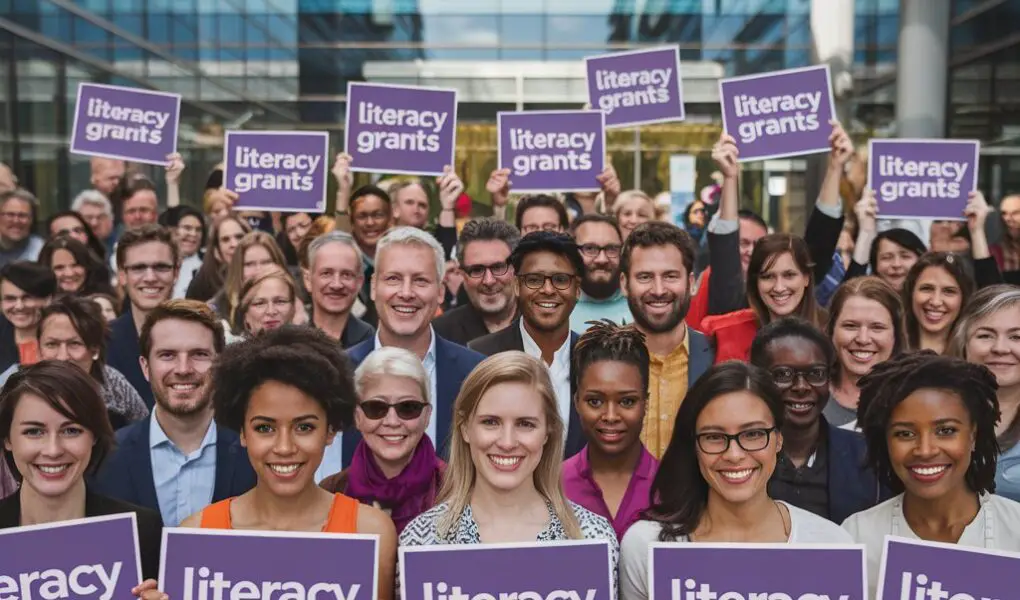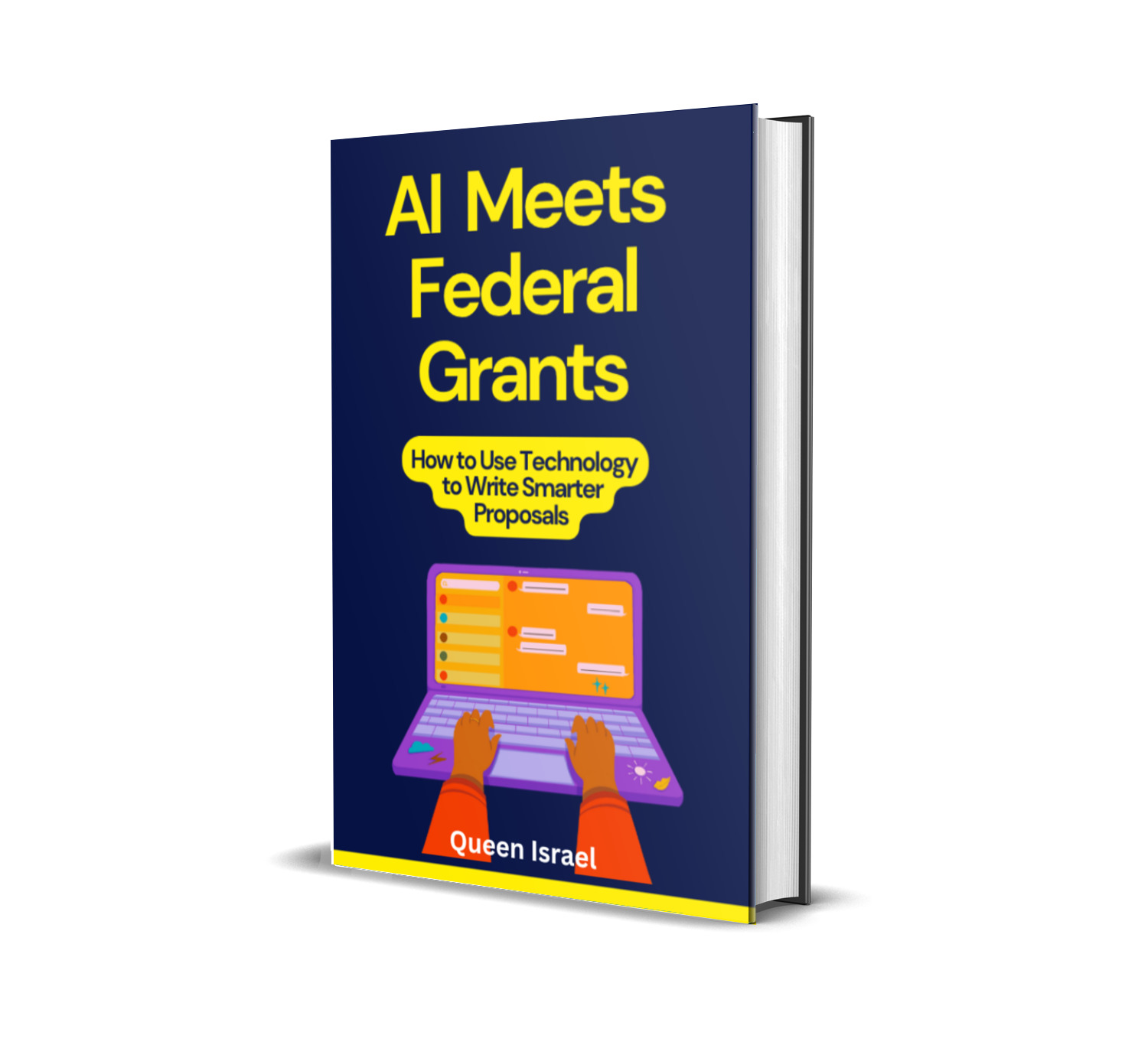Literacy grants provide invaluable resources for organizations and individuals working to improve literacy rates across the globe. With these grants, nonprofits, schools, and community organizations can create innovative educational programs that empower children and adults alike.
If you’re focusing on early childhood education, adult literacy, or technology-enhanced learning, securing literacy grants is a crucial step toward making a meaningful impact.
In this article, we’ll explore the ins and outs of literacy grants, including where to find them, how to apply for them, and tips to increase your chances of success.
Plus, we’ll share inspiring success stories and address common challenges to equip you with everything you need to know about leveraging literacy grants to transform lives.
Understanding the Importance of Literacy Grants
At the heart of any thriving society is the ability to read, write, and communicate effectively. Unfortunately, millions of individuals worldwide are still struggling with basic literacy skills. According to UNESCO, around 750 million adults—about 15% of the global adult population—lack basic literacy skills. In the United States alone, nearly 43 million adults are illiterate, impacting their ability to succeed in the workforce, manage daily tasks, and improve their quality of life.
This is where literacy grants come into play. They help fund initiatives aimed at improving literacy rates, creating equal opportunities for education, and empowering individuals to break the cycle of poverty. For those seeking to address these challenges, literacy grants offer the financial support necessary to implement programs, purchase resources, and expand access to educational tools.
But why are literacy grants so essential? Literacy is more than just reading and writing; it’s the foundation for lifelong learning and personal development. Enhanced literacy skills lead to better employment opportunities, improved health outcomes, and increased civic participation. By investing in literacy programs through grants, communities can foster economic growth, reduce inequality, and build stronger, more resilient populations.
Types of Literacy Grants
There are several types of literacy grants available, each catering to different aspects of literacy education. Understanding these types can help you identify which grants align best with your organization’s goals and needs. Here are the most common categories:
- Early Childhood Literacy Grants
Early intervention is crucial in helping children develop strong reading and writing skills. These grants typically fund programs for preschools, kindergartens, and early childhood centers that focus on teaching foundational literacy skills. Early childhood literacy is strongly correlated with future academic success, making it an essential area of focus. Programs funded by these grants might include storytelling sessions, phonics instruction, and interactive reading activities that engage young learners and set the stage for lifelong literacy.
- Adult Literacy Grants
Adult literacy programs aim to support individuals who struggle with basic reading and writing skills. These programs help adults gain the necessary skills to improve their employability, engage in lifelong learning, and participate more fully in society. Grants may fund adult education centers, workforce development programs, or community-based literacy initiatives. By enhancing adult literacy, these programs empower individuals to pursue higher education, secure better jobs, and contribute meaningfully to their communities.
- Technology in Literacy Grants
In today’s digital age, technology plays a crucial role in enhancing literacy education. These grants support initiatives that integrate technology into literacy programs, such as the development of online courses, learning apps, and interactive eBooks. By using technology, educators can reach a wider audience, offer personalized learning experiences, and bridge gaps in traditional education methods. Technology-driven literacy programs can also provide access to resources for remote or underserved populations, ensuring that everyone has the opportunity to improve their literacy skills.
- Library and Community Literacy Grants
Public libraries and community centers are often hubs of literacy education. Many literacy grants are directed toward funding literacy initiatives in these spaces, such as reading programs, literacy events, and book distribution. These initiatives often serve as lifelines for individuals who may not have access to formal education or who need additional support to improve their literacy skills. Libraries also provide a welcoming environment for learners of all ages, fostering a love for reading and continuous learning.
- Specialized Literacy Grants
Some grants focus on specific populations or unique aspects of literacy. For example, grants may target literacy for refugees and immigrants, literacy for individuals with disabilities, or literacy in rural areas. These specialized grants address the unique challenges faced by different groups, ensuring that literacy programs are inclusive and accessible to everyone. By catering to specific needs, these grants help create tailored solutions that effectively improve literacy outcomes for diverse populations.
Where to Find Literacy Grants
Finding literacy grants that align with your organization’s goals can be a challenging but rewarding task. Fortunately, numerous foundations, government programs, and corporate sponsors offer funding for literacy initiatives. Here are some key sources to explore:
- The National Literacy Foundation
The National Literacy Foundation provides grants to organizations promoting literacy education at all levels. Their goal is to ensure that individuals of all ages have the skills they need to succeed in education and life. They offer various grant programs, including those focused on early childhood literacy, adult education, and community-based initiatives.
- The Bill & Melinda Gates Foundation
One of the most well-known philanthropies, the Bill & Melinda Gates Foundation offers funding opportunities for initiatives related to global literacy, especially in underserved communities. They focus on supporting programs that improve education through innovative, scalable solutions. Their grants often emphasize the use of technology and evidence-based approaches to enhance literacy outcomes.
- The Dollar General Literacy Foundation
The Dollar General Literacy Foundation supports adult literacy programs, early childhood literacy, and family literacy programs. They focus on community-based organizations and schools working to improve access to education and literacy. Their grants aim to empower individuals and families by providing the resources needed to achieve better educational outcomes.
- Government Grants
Both local and national government agencies often provide funding for literacy initiatives. In the United States, for example, the Department of Education offers numerous grants that support literacy, including the Literacy, Education, and Support Services Program. Additionally, state and local governments may have their own grant programs tailored to the specific needs of their communities.
- Corporate and Private Foundations
Many corporations and private organizations offer grants to improve literacy in various communities. Companies like Target, Walmart, and Google have literacy-focused grant programs. Additionally, local businesses often partner with community organizations to fund literacy initiatives. These partnerships can provide not only financial support but also valuable resources and expertise to enhance your programs.
- Online Grant Databases
Utilizing online grant databases can streamline your search for literacy grants. Websites like Grants.gov, Foundation Center, and GrantWatch offer comprehensive listings of available grants, including those focused on literacy. These platforms allow you to filter searches based on criteria such as location, funding amount, and program focus, making it easier to find grants that match your organization’s needs.
- Professional Associations and Networks
Joining professional associations and networks related to literacy and education can provide access to exclusive grant opportunities. Organizations like the International Literacy Association (ILA) and the National Council for Adult Literacy (NCAL) often share information about available grants and funding sources with their members. Networking with other professionals in the field can also lead to collaborative grant applications and partnerships.
How to Apply for Literacy Grants
The process of applying for literacy grants can vary depending on the funding body. However, there are common elements that you should prepare for to increase your chances of success. Here’s a step-by-step guide to help you navigate the grant application process:
- Clearly Define Your Goals
Start by outlining the specific literacy problem you aim to address. Are you focused on early childhood literacy, adult education, or a particular geographic area? Be clear about your program’s mission and how it aligns with the priorities of the funder. A well-defined goal helps convey the purpose and importance of your project to potential funders.
- Develop a Strong Proposal
Your proposal should outline the goals, methodology, target population, and expected outcomes of your literacy program. Highlight how your project aligns with the funder’s mission and why it’s important. Make sure your proposal is data-driven, with relevant research and statistics to support your claims. Incorporate success stories, testimonials, and evidence-based practices to demonstrate the potential impact of your program.
- Provide a Detailed Budget
A detailed budget is essential when applying for literacy grants. Funders want to know how the money will be spent. Break down your expenses for program materials, salaries, technology, and other necessary resources. Include both direct costs (e.g., books, software) and indirect costs (e.g., administrative expenses). Transparency in your budgeting process builds trust with funders and shows that you have a clear financial plan.
- Show Impact and Evaluation Plans
Funders want to see the impact your literacy program will have. Provide measurable outcomes and explain how you will evaluate the effectiveness of your program. Use statistics, past results, and case studies to demonstrate the potential impact. Outline your evaluation methods, such as surveys, assessments, and progress tracking, to show that you have a plan in place to measure success.
- Follow the Instructions Carefully
Each grant application will have specific requirements, including submission guidelines, deadlines, and documentation. Be sure to follow these instructions meticulously to avoid disqualification. Double-check for missing information or errors before submitting. Adhering to the funder’s guidelines shows professionalism and respect for their process.
- Highlight Your Organization’s Strengths
Emphasize your organization’s experience, expertise, and past successes in literacy education. Include information about your team, their qualifications, and any partnerships that enhance your program’s effectiveness. Demonstrating your capacity to manage the grant and execute the program successfully increases your credibility with funders.
- Craft a Compelling Narrative
Your grant proposal should tell a story that resonates with the funder. Use a conversational and friendly tone to engage the reader, while maintaining professionalism. Highlight the real-life impact of your program on individuals and communities. A compelling narrative can make your proposal stand out and leave a lasting impression on reviewers.
- Include Letters of Support
Letters of support from community leaders, partner organizations, and beneficiaries can strengthen your grant application. These letters provide third-party validation of your program’s value and effectiveness. They also demonstrate community buy-in and support, which can be a significant factor in the decision-making process.
Tips to Increase Your Chances of Winning Literacy Grants
Securing literacy grants can be competitive, but with the right strategies, you can enhance your chances of success. Here are some proven tips to help you win more grants:
- Research Funding Sources Thoroughly
Take time to research different literacy grants and find the best fit for your project. Each funder has specific priorities and funding limits, so ensure that your program aligns with their focus areas. Tailor your proposals to match the funder’s mission and guidelines, demonstrating that you understand and support their objectives.
- Build Relationships with Funders
Establishing relationships with grantmakers can give you an edge in the application process. Attend their events, engage with them on social media, and keep them informed about your organization’s progress and successes. Building rapport can make funders more likely to support your proposals in the future.
- Collaborate with Other Organizations
If you’re a small nonprofit, consider partnering with other organizations to increase your chances of securing a grant. A collaborative effort demonstrates greater capacity and can strengthen your proposal. Partnerships can bring additional resources, expertise, and credibility to your project, making it more attractive to funders.
- Utilize Templates and Tools
If you’re new to grant writing, it can be helpful to use templates and tools that will guide you through the process. Grant Writing Academy offers a variety of resources, including proposal templates and tools, to help you write compelling and effective grant applications. Leveraging these resources can save time and ensure that your proposals meet all necessary requirements.
- Show Strong Community Support
Funders appreciate seeing strong community backing for literacy projects. If your program has support from local businesses, community members, or other organizations, be sure to highlight this in your application. Demonstrating community support indicates that your program is needed and will be well-received.
- Focus on Sustainability
Many funders want to know how you will sustain your literacy project beyond the grant period. Explain how you plan to secure additional funding, create long-term partnerships, or generate revenue to ensure the program’s future. A clear sustainability plan shows that your program has longevity and will continue to make an impact.
- Provide Evidence of Success
Use data and success stories to demonstrate the effectiveness of your literacy programs. Include metrics such as improved literacy rates, increased graduation rates, or higher employment rates among participants. Providing concrete evidence of your program’s success can convince funders of its value and potential.
- Tailor Each Proposal
Avoid using a one-size-fits-all approach for your grant applications. Tailor each proposal to the specific funder, addressing their unique priorities and criteria. Personalized proposals show that you have taken the time to understand the funder’s goals and how your project aligns with them.
- Seek Feedback and Revise
Before submitting your grant proposal, seek feedback from colleagues, mentors, or grant writing professionals. Constructive feedback can help you identify areas for improvement and strengthen your application. Revise your proposal based on the feedback to ensure it is clear, concise, and persuasive.
- Stay Organized and Meet Deadlines
Keep track of grant deadlines, requirements, and submission processes to ensure that you don’t miss any opportunities. Staying organized and submitting your applications on time demonstrates reliability and professionalism, which can positively influence funders’ perceptions of your organization.
Success Stories: Literacy Grants Making a Difference
To truly understand the impact of literacy grants, let’s explore some inspiring success stories from organizations that have effectively utilized these grants to transform lives and communities.
- Reading for All: Empowering Early Learners
Reading for All, a nonprofit organization dedicated to early childhood literacy, received a grant from the Dollar General Literacy Foundation to expand their preschool reading programs. With the grant, they were able to hire additional educators, develop interactive reading materials, and implement a mobile library to reach underserved communities. As a result, literacy rates among preschoolers in the targeted areas increased by 25% within the first year. The program not only improved reading skills but also fostered a love for learning among young children, setting a strong foundation for their future education.
- Adult Literacy Success: Transforming Lives
Adult Learning Center (ALC), a community-based organization, secured a grant from the National Literacy Foundation to launch an adult literacy program aimed at helping individuals improve their reading and writing skills. The program offered flexible class schedules, personalized tutoring, and job readiness training. Over two years, 1,200 adults participated in the program, with 85% reporting increased confidence in their literacy skills and 70% securing better employment opportunities. The ALC’s success demonstrates how targeted literacy grants can empower adults to achieve their personal and professional goals.
- Tech-Enhanced Literacy: Bridging the Digital Divide
TechRead, a startup focused on integrating technology into literacy education, received funding from the Bill & Melinda Gates Foundation to develop an interactive eBook platform for children. The platform incorporates gamification, adaptive learning algorithms, and multimedia content to engage young readers. After launching the platform in several schools, TechRead reported a 30% increase in reading comprehension and a 40% boost in student engagement. This success highlights the potential of technology-driven literacy programs to enhance learning experiences and outcomes.
- Library Literacy Initiative: Community Empowerment
City Library Network partnered with local businesses and received a grant to implement a comprehensive literacy initiative across their public libraries. The initiative included free access to books, literacy workshops, and community reading events. The program reached over 10,000 individuals in the first year, with participants showing significant improvements in their reading levels and overall academic performance. The City Library Network’s initiative underscores the vital role that libraries play in promoting literacy and fostering community development.
Overcoming Common Challenges in Securing Literacy Grants
While literacy grants offer significant opportunities, organizations often face challenges in securing them. Here are some common obstacles and strategies to overcome them:
- Limited Funding Availability
Challenge: There is intense competition for limited grant funds, making it difficult to secure the necessary support for your programs.
Solution: Diversify your funding sources by applying to multiple grants and exploring alternative funding options such as crowdfunding, sponsorships, and partnerships. Building a strong case for your program’s impact and sustainability can also make your application stand out.
- Lack of Grant Writing Expertise
Challenge: Writing effective grant proposals requires specific skills and knowledge that many organizations may lack.
Solution: Invest in grant writing training or hire experienced grant writers to enhance your applications. Resources like the Grant Writing Academy offer valuable tips, strategies, templates, and tools to help you craft compelling proposals.
- Insufficient Data and Evidence
Challenge: Funders require evidence of your program’s effectiveness, which can be difficult to provide without proper data.
Solution: Implement robust data collection and evaluation methods from the outset of your program. Use surveys, assessments, and performance metrics to gather relevant data that demonstrates your program’s impact.
- Time-Consuming Application Processes
Challenge: Grant applications can be lengthy and time-consuming, diverting resources from your core activities.
Solution: Plan ahead and create a grant calendar to keep track of deadlines and requirements. Streamline your application process by developing a standard proposal template that can be customized for different grants.
- Meeting Specific Grant Requirements
Challenge: Each grant may have unique requirements that can be difficult to meet.
Solution: Carefully review each grant’s guidelines and tailor your proposals to align with the funder’s priorities and criteria. Ensure that you address all required elements and provide the necessary documentation to increase your chances of success.
- Sustainability Concerns
Challenge: Funders often seek assurance that your program will continue beyond the grant period.
Solution: Develop a clear sustainability plan that outlines how you will maintain and expand your program after the grant ends. This can include strategies for securing additional funding, building partnerships, and generating revenue.
Frequently Asked Questions (FAQs) About Literacy Grants
1. What are literacy grants?
Literacy grants are financial awards provided by foundations, government agencies, corporations, and other organizations to support programs and initiatives aimed at improving literacy skills. These grants can fund a variety of projects, including early childhood education, adult literacy programs, technology-enhanced learning, and community-based literacy initiatives.
2. Who is eligible to apply for literacy grants?
Eligibility for literacy grants varies depending on the funder. Typically, eligible applicants include nonprofit organizations, educational institutions, libraries, community groups, and sometimes for-profit entities involved in literacy education. It’s essential to review each grant’s specific eligibility criteria before applying.
3. How much funding can I expect from a literacy grant?
The amount of funding provided by literacy grants varies widely based on the funder and the scope of the project. Grants can range from a few thousand dollars to several hundred thousand dollars. It’s important to carefully review the grant guidelines to understand the funding limits and ensure your budget aligns with the grant’s offerings.
4. How long does it take to receive grant funding?
The timeline for receiving grant funding can vary significantly. Some grants have short review periods and may provide funds within a few months, while others may take longer due to extensive evaluation processes. It’s advisable to plan ahead and apply for grants well in advance of when you need the funds.
5. Can I apply for multiple literacy grants at the same time?
Yes, you can apply for multiple literacy grants simultaneously, provided that the grantors do not have restrictions against multiple applications. Applying for multiple grants can increase your chances of securing funding, but it’s important to manage your applications carefully to ensure that each proposal is well-crafted and tailored to the specific grant requirements.
6. What makes a successful literacy grant application?
A successful literacy grant application clearly defines the problem, outlines a well-structured program, demonstrates the potential impact with supporting data, includes a realistic budget, and aligns with the funder’s priorities. Additionally, showcasing your organization’s strengths, experience, and community support can enhance your application’s effectiveness.
7. How do I track the success of my literacy program?
Tracking the success of your literacy program involves setting measurable goals and using evaluation methods to assess progress. Common metrics include improvement in literacy rates, participant satisfaction, graduation rates, and employment outcomes. Regularly collecting and analyzing data helps you demonstrate your program’s impact and make informed decisions for future improvements.
Leveraging Resources to Enhance Your Grant Writing
Effective grant writing requires access to the right resources and tools. Here are some valuable resources to help you craft compelling literacy grant applications:
-
Grant Writing Academy Newsletter
Subscribe to the Grant Writing Academy Newsletter to access exclusive tips, strategies, templates, and tools designed to enhance your grant writing skills. The newsletter provides up-to-date information on best practices, grant opportunities, and expert advice to help you succeed in securing funding for your literacy programs.
-
Expand Your Knowledge
The grant writing field is always evolving. Keep learning and improving your skills to stay competitive.
Recommended Resources:
- Request for Proposal Success: How to Write Proposals That Win: Learn the techniques and strategies to create standout proposals.
- Tech Startup Funding Secrets: Navigating Grants for Maximum Growth: Perfect for those in the tech sector looking to leverage grants for scaling.
- Grant Proposal Guide for Environmental Projects: Tailored for environmental initiatives seeking to secure impactful funding.
- The Ultimate Guide to Federal Grant Applications: Techniques for Success: Master the complexities of federal grants with actionable insights.
Explore More Books Here
2.Invest in Expert Guidance
Want to fast-track your growth and achieve even more success?
Join one of our mentorship programs for tailored advice and support:
Mentorship Programs
- 3-Month Mentorship: The Foundation Builder: A short-term plan to refine your grant writing skills and win your first (or next) grant.
- 6-Month Mentorship: The Proposal Pro: Dive deeper into strategies, proposal reviews, and funding plans.
- 1-Year Mentorship: The Funding Champion: Build long-term success with comprehensive guidance, unlimited reviews, and exclusive resources.
4. Book a One-on-One Consultation
Sometimes you just need personalized advice to tackle challenges or fine-tune your strategy. Let’s work together to solve your unique grant writing challenges.
Book a Consultation Call Here
Conclusion
Literacy grants are an incredible opportunity for nonprofits, schools, and organizations seeking to improve literacy rates and empower individuals. Whether you’re addressing early childhood literacy, adult education, or the integration of technology, these grants can help turn your vision into reality. By carefully researching funding opportunities, crafting a compelling proposal, and following best practices, you can increase your chances of success.
Moreover, overcoming common challenges such as limited funding availability, lack of grant writing expertise, and ensuring program sustainability can further enhance your ability to secure and effectively utilize literacy grants. The success stories highlighted in this article demonstrate the profound impact that well-funded literacy programs can have on individuals and communities.
For those looking to take their grant writing skills to the next level and maximize their chances of winning literacy grants, we highly recommend subscribing to the Grant Writing Academy Newsletter.
Our newsletter is filled with practical tips, strategies, templates, and tools designed to enhance your grant writing and help you succeed in securing funding for your literacy programs. By leveraging these resources, you can build stronger, more effective grant applications and drive meaningful change in literacy education.
Remember, literacy is more than just reading and writing—it’s the key to unlocking opportunities, fostering personal growth, and building stronger communities. With the right resources and support, you can help create a world where everyone has the opportunity to succeed.
Subscribe to the Grant Writing Academy Newsletter today to get exclusive insights and tools to enhance your grant writing skills!
Resources and References
To further support your journey in securing literacy grants, here are some valuable resources and references:
- UNESCO Literacy Statistics: UNESCO Institute for Statistics
- National Literacy Foundation: National Literacy Foundation Website
- Bill & Melinda Gates Foundation: Gates Foundation Grants
- Dollar General Literacy Foundation: Dollar General Literacy Foundation
- U.S. Department of Education Grants: Grants.gov – Department of Education
- International Literacy Association (ILA): International Literacy Association
- Grant Writing Academy: Grant Writing Academy
These resources provide comprehensive information on grant opportunities, best practices in grant writing, and strategies for successful literacy programs. By utilizing these tools and continuously improving your grant writing skills, you can make a lasting impact on literacy education and empower individuals and communities to achieve their full potential.






